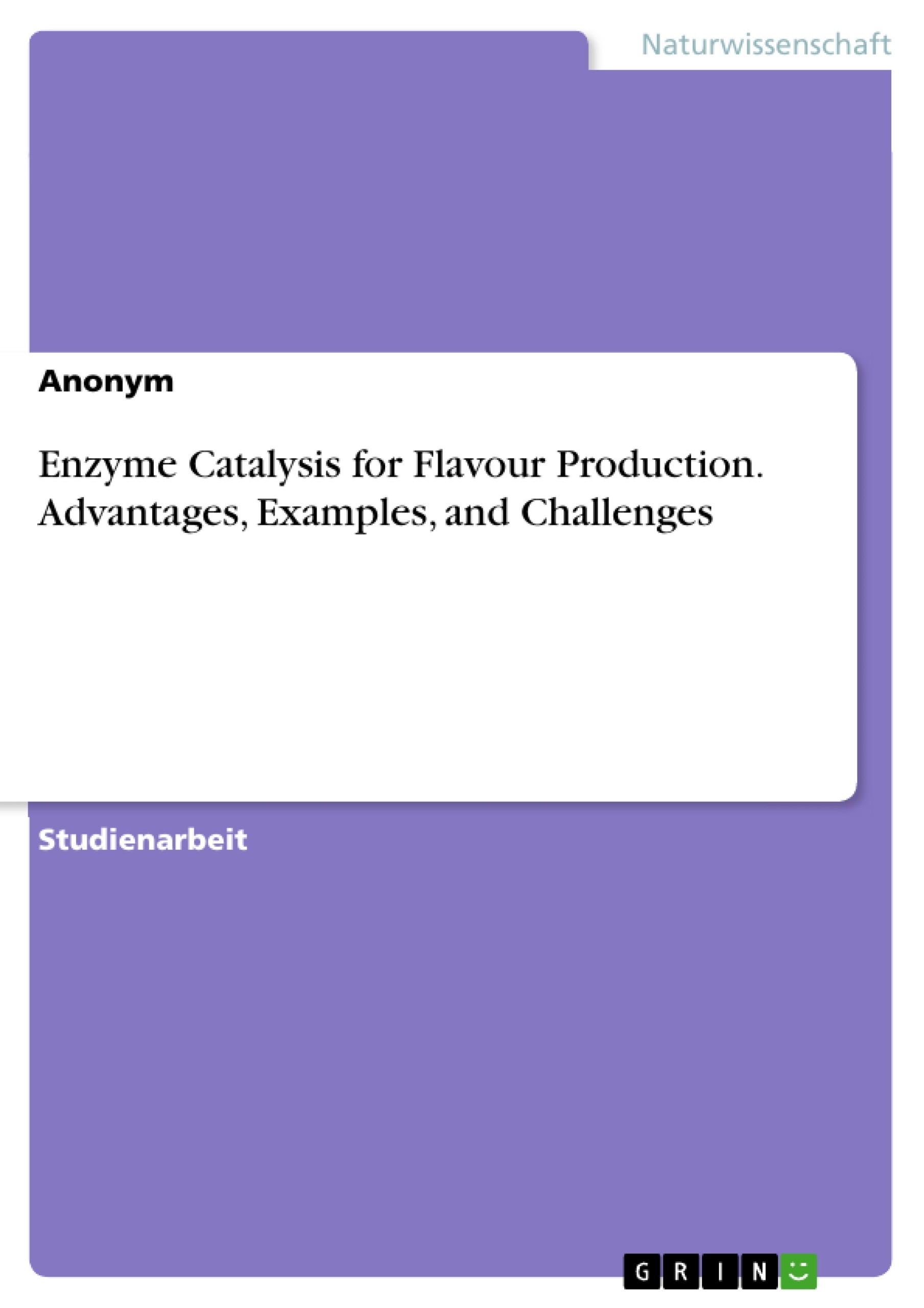This paper gives an overview of the potential offered by biocatalysis for the synthesis of natural odorants, highlighting relevant biotransformations using enzymes in the flavour production. The examples of industrial processes based on biocatalytic methods are discussed, their advantages over classical chemical synthesis is also highlighted. Lastly the challenges facing the biocatalytic production are expounded upon.
Biocatalytic production of aroma compounds has rapidly gained momentum. Natural flavours belong to many different structural classes and their industrial production has been of great challenge to academic and research scientists.
Inhaltsverzeichnis
- Abstract
- 1. Introduction
- 2. History of enzyme catalysis for flavour production
- 3. Advantages of biocatalysis over conventional chemical synthesis
- 4. Examples of enzyme catalysis for flavour production
- 4.1 Ehrlich pathway: the route for 2-phenylethanol (2-pe) production
- 4.2 Rose oxide biosynthesis using Chloroperoxidase (CPO)
- 4.3 Production of Flavours via Bioreduction
- 4.4 Esterification by lipase
- 5. Challenges
- 5.1 Low yield and high costs of production
- 5.2 Toxicity of the substrate and products
- 5.3 Enzymes deactivation
- 5.4 Other challenges
- 6. Conclusion
- 7. References
Zielsetzung und Themenschwerpunkte
Dieses Dokument befasst sich mit der Anwendung von Enzymen in der Lebensmittelindustrie, insbesondere mit der enzymatischen Katalyse zur Herstellung von Aromen. Es werden die Vorteile von Biokatalyse gegenüber konventioneller chemischer Synthese, verschiedene Beispiele für enzymatische Aromenproduktion und die Herausforderungen dieser Technologie behandelt.
- Enzymatische Katalyse zur Aromenproduktion
- Vorteile der Biokatalyse gegenüber chemischer Synthese
- Beispiele für enzymatische Aromaproduktion (z.B. Ehrlich-Weg, Rose-Oxid-Biosynthese, Bioreduktion, Veresterung)
- Herausforderungen der enzymatischen Aromenproduktion (z.B. geringe Ausbeute, hohe Produktionskosten, Toxizität von Substraten und Produkten, Enzymdeaktivierung)
- Zukünftige Perspektiven der enzymatischen Aromenproduktion
Zusammenfassung der Kapitel
Kapitel 1 führt das Thema der enzymatischen Aromenproduktion ein und betont die Bedeutung natürlicher Aromen in der Lebensmittel- und Getränkeindustrie. Kapitel 2 beleuchtet die Geschichte der enzymatischen Katalyse in der Aromenproduktion, von der frühen Fermentation bis zu modernen biokatalytischen Methoden. Kapitel 3 beleuchtet die Vorteile der Biokatalyse gegenüber konventioneller chemischer Synthese, darunter höhere Selektivität, mildere Reaktionsbedingungen und Umweltfreundlichkeit. Kapitel 4 bietet detaillierte Beispiele für enzymatische Aromaproduktion, wie z.B. den Ehrlich-Weg zur Herstellung von 2-Phenylethanol (2-PE), die Rose-Oxid-Biosynthese unter Verwendung von Chloroperoxidase (CPO) und die Produktion von Aromen durch Bioreduktion und Veresterung.
Schlüsselwörter
Enzymatische Katalyse, Aromenproduktion, Bioreduktion, Ehrlich-Weg, Biotransformation, Veresterung, natürliche Aromen, Lebensmittelindustrie, Biokatalyse, chemische Synthese, Selektivität, Umweltfreundlichkeit, Herausforderungen.
- Quote paper
- Anonym (Author), 2020, Enzyme Catalysis for Flavour Production. Advantages, Examples, and Challenges, Munich, GRIN Verlag, https://www.hausarbeiten.de/document/915382


